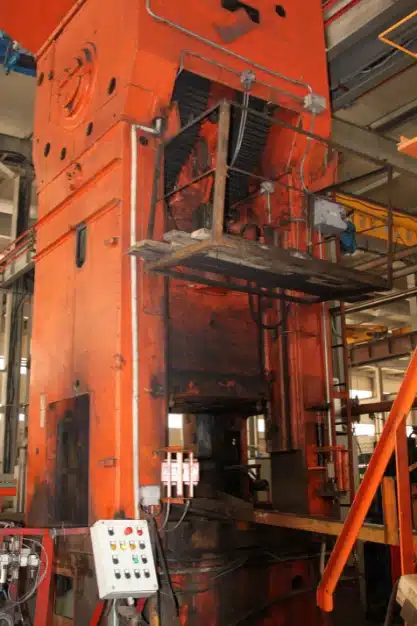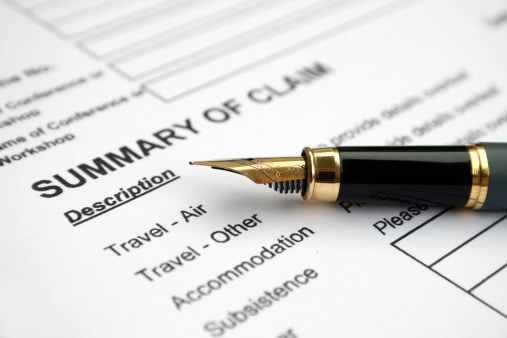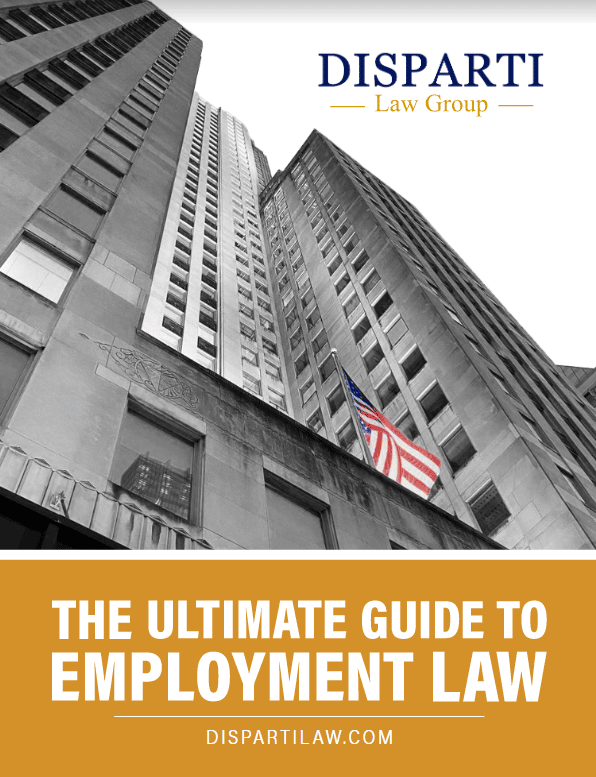 A mechanical power press is the most commonly used type of power press. Since it’s the most commonly used, it’s also the most researched power press in terms of use and safety. Workers who regularly use mechanical power presses are at a greater risk of suffering an amputation injury than others.
A mechanical power press is the most commonly used type of power press. Since it’s the most commonly used, it’s also the most researched power press in terms of use and safety. Workers who regularly use mechanical power presses are at a greater risk of suffering an amputation injury than others.
Laws and regulations related to the use of mechanical power presses be focused on worker safety and reducing the risk of amputations and other injuries while using this machine. Amputations that result can be particularly devastating for the victim. In this article, we’ll discuss ways to reduce the risk of amputation from mechanical power presses
In This Article:
- Statistics on Mechanical Power Press Amputation
- Who Is Most at Risk For Mechanical Power Press Injuries
- Reducing the Risk of Amputation From Mechanical Power Presses: Full-Rotation vs Part-Rotation
- Reducing the Risk of Amputation From Mechanical Power Presses: Foot Pedals vs Dual Palm Buttons
- Compensation Available for Job-Related Amputations
Statistics on Mechanical Power Press Amputations
Statistics on mechanical power press amputations are concerning and highlight the potential risks associated with this type of equipment. Mechanical power presses are one of the three major types of power presses, alongside hydraulic and pneumatic presses, and they are widely used in various industries. Unlike hydraulic and pneumatic presses, mechanical power presses are more commonly used and have been the subject of extensive research due to their prevalence in the workforce.
According to the Centers For Disease Control (CDC), the United States had approximately 151,000 mechanical press operators, indicating a significant workforce exposed to these machines. Among all reported amputations, which amount to about 20,000 per year, approximately 2,000 incidents per year, or 10%, occur among power press operators. This includes those who operate mechanical power presses.
The high rate of amputations among power press operators underscores the importance of workplace safety and the need for stringent safety measures and regulations in industries utilizing these machines. It also calls for further research and improvement in safety standards to prevent such severe accidents and protect the well-being of workers.
Employers, safety authorities, and industry stakeholders must collaborate to enhance safety training and ensure the proper maintenance and operation of mechanical power presses. By addressing these concerns and focusing on safety enhancements, it is possible to mitigate the occurrence of amputations and create a safer working environment for power press operators and other employees in the industry.
Who Is Most at Risk of Mechanical Power Press Injuries
Mechanical power press injuries pose a significant risk to operators, with certain groups being more vulnerable than others. Existing data on injury rates and operator hand speeds suggest that current regulations may not adequately protect all power press operators, particularly young male operators. Studies have shown that younger workers, those under the age of 31, tend to have faster hand speeds than older workers.
In fact, 79% of young male operators were found to exceed the OSHA standard hand speed of 1.6 m/sec (63 in./sec), with the fastest hand speed measured being 3.6 m/sec (142 in./sec), more than twice the specified OSHA standard. This data indicates that young male press operators have a higher risk of amputations due to their faster hand speeds and potential difficulty in reacting quickly to dangerous situations.
Proper training, enforcement of safety protocols, and enhanced safety measures are essential to mitigate the risk of mechanical power press injuries, especially among young male operators with faster hand speeds
Reducing the Risk of Amputation From Mechanical Power Presses: Full-Revolution vs Part-Revolution
There are two types of clutches used in a mechanical power press: full-revolution and part-revolution.
- Full-Revolution Clutch. Full-revolution clutch presses operate in such a way that once the clutch is engaged, it remains engaged until the crankshaft completes a full cycle. This means that the press cannot be disengaged until the full downward and upward strokes are completed.
- Part-Revolution Clutch. On the other hand, part-revolution clutch presses offer a distinct advantage in terms of safety. They allow the clutch to be disengaged at any point during the downward cycle, enabling the press to stop immediately for safety reasons, even before the crankshaft completes the downstroke. This capability significantly reduces the potential hazards and risks associated with the operation of the press.
Due to the nature of the clutch mechanisms, full-rotation mechanical power presses generally pose a greater hazard after a stroke is initiated compared to part-rotation presses. In full-revolution presses, the clutch completes a full revolution before disengaging, which means that any unintended or unsafe actions initiated at the start of a cycle cannot be halted until the entire cycle is completed. This increases the likelihood of accidents and injuries, especially in cases where immediate action is required to prevent harm.
An OSHA report showed that of the 2,908 reported mechanical power press injuries, foot-controlled presses were responsible for approximately 62% (1,801) of the injuries, and hand-activated presses accounted for approximately 30% (876) of the injuries.
While other factors could contribute to these statistics, it’s worth noting that the choice of clutch mechanism and the ability to stop the press quickly for safety reasons could have influenced the injury rates. This further emphasizes the importance of utilizing part-rotation clutch presses in situations where operator safety is a primary concern, promoting a safer work environment and reducing the risk of accidents and injuries.
Reducing the Risk of Amputation From Mechanical Power Presses: Foot Pedals vs Dual Palm Buttons
Reducing the risk of amputations from mechanical power presses is of paramount importance to ensure the safety of workers operating these machines. One effective safety measure is the implementation of dual palm-button controls. These controls are commonly used in manually operated power presses to initiate machine motion and offer significant advantages in terms of operator safety.
Palm-Button Buttons
With dual palm-button controls, the press cycle can only be initiated when both hands are away from the point of operation. Once the workpiece is manually positioned in the press, the operator must depress the palm buttons using both hands, ensuring that hands are kept clear of the hazardous areas during the press operation. This design inherently separates the operator’s hands from the machine’s point of operation during the cycling of the press, significantly reducing the risk of accidental amputations. The requirement for simultaneous hand engagement adds an additional layer of safety, preventing the operator from inadvertently initiating the press cycle while hands are in the danger zone.
Foot Pedals
In contrast, foot controls used in power presses do not intrinsically separate the operator’s hands from the point of operation during the operating cycle. Though foot controls can activate the press while leaving hands free, they require safeguarding devices to protect the operator.
These devices, such as barriers, gates, or pullouts, may have interlocks to control the initiation of the press stroke. However, the effectiveness of foot controls depends on the proper functioning and maintenance of these safeguarding devices. In some cases, operators might attempt to bypass or modify the safeguards, putting themselves at risk.
Dual palm-button controls represent an essential safety measure to reduce the risk of amputations from mechanical power presses. By mandating the removal of both hands from the point of operation before initiating the press cycle, dual palm buttons ensure a higher level of operator safety compared to foot controls. Implementing and adhering to these safety protocols, along with regular training and maintenance, can create a safer work environment around mechanical power presses and significantly mitigate the risk of amputation accidents.
Compensation Available for Job-Related Amputations
Compensation available for job-related amputations varies depending on the country, state, or region’s legal and regulatory framework, as well as the specific circumstances of the accident. In general, there are several avenues through which individuals who have suffered job-related amputations may seek compensation:
- Workers’ Compensation: In many jurisdictions, workers’ compensation laws mandate that employers provide insurance coverage to employees for work-related injuries, including amputations. Workers’ compensation typically covers medical expenses, rehabilitation costs, disability benefits, and, in some cases, vocational training to help the individual re-enter the workforce if they can no longer perform their previous job.
- Employer Liability: If the amputation occurred due to the employer’s negligence or violation of safety regulations, the injured employee may have the right to pursue a personal injury claim against the employer. This is not an easy route to take as it is difficult to nearly impossible to sue your employer, especially after receiving workers’ compensation. However, if the negligence is particularly extreme, it may be worth the fight.
- Third-Party Liability: In some situations, a third party, such as a manufacturer of faulty equipment or a subcontractor, may be responsible for the amputation accident. In such cases, the injured worker may have grounds to file a personal injury lawsuit against the third party to seek compensation.
- Social Security Disability: Depending on the severity of the amputation and its impact on the individual’s ability to work, they may be eligible for Social Security Disability benefits if the condition meets the program’s criteria.
Understanding the legal processes behind receiving compensation for a workplace amputation can be challenging. The Disparti Law Group Accident & Injury Lawyers is ready to fight for your rights and help relieve you of the financial consequences of your accident. If you or your loved one has suffered any type of workplace amputation, reach out to us today for a FREE consultation or call (312) 600-6000









